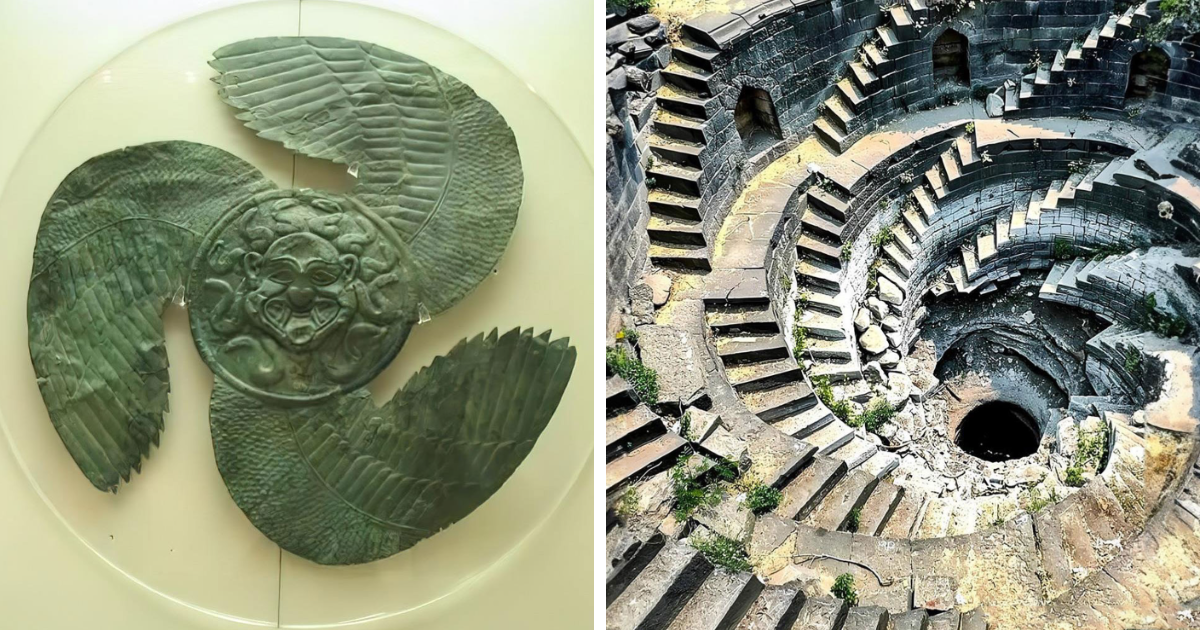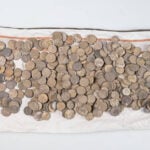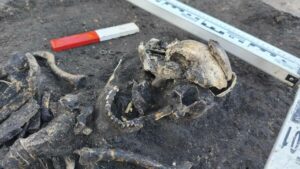Beneath the Egyptian plateau, a timber sarcophagus has emerged from the sands of Abydos, hidden for over 3,000 years. This astonishing find opens a window into ancient burial customs and the remarkable craftsmanship of the era. What mysteries does this sarcophagus hold about those interred within it and the culture they belonged to? As we delve into its secrets, we may uncover fascinating insights into their beliefs, rituals, and daily lives. This discovery not only enriches our understanding of history but also reignites our curiosity about an ancient society that once thrived in the shadows of time.
ADVERTISEMENT
ADVERTISEMENT
Molon Labe, a defiant challenge to the might of Xerxes’ colossal Persian army, echoed through the narrow pass of Thermopylae on 19 August 480 BC. King Leonidas, leading a valiant band of Spartans, Thespians, and Thebans, stood resolute against insurmountable odds for three fierce days. Even the revered Immortals struggled to breach their ranks until treachery revealed a hidden route. In their noble stand, these warriors carved a legacy of courage and sacrifice that transcended their defeat. Simonides of Ceos immortalized their valor in a poignant epitaph, honoring them as symbols of Greek unity and unwavering resistance.
Unearthed in 2016 at Must Farm in Whittlesey, Cambridgeshire, a remarkable bronze socketed axe with a charred wooden handle whispers ancient tales from 1000-800 BCE. This artifact, now safeguarded by the Cambridge Archaeological Unit, hails from a truly extraordinary site—Britain’s best-preserved Bronze Age settlement. Its tragic destruction by fire led to the remarkable preservation of its remains, which sank into the silt of a shallow river, frozen in time. Each layer of earth tells stories of a lost world, inviting us to delve deep into the mysteries of a civilization that once flourished, only to be momentarily silenced.
ADVERTISEMENT
Carreg Coetan Arthur, a remarkable Neolithic burial chamber on the north Pembrokeshire coastline, embodies over 5,000 years of history with its impressive 17-ton capstone, teetering on two of its original uprights. While not a traditional portal dolmen, the southern orthostats create an intentional entrance, suggesting a carefully planned design. Once a revered site for ancestral rituals, this sacred space now exists unexpectedly near a cul-de-sac, juxtaposing ancient customs with the realities of contemporary life. This burial chamber serves as a profound reminder of our connections to the past amid the encroachments of modernity.
Imagine a magnificent ancient temple, nearly buried in sand, like the Temple of Philae in Egypt. The photos from 1832 and 2023 reveal its stunning resilience over 2,200 years. With every inch of its intricate carvings and towering columns restored, this temple whispers tales of a vibrant past. What secrets does it hold? The transformation from sand-covered relic to a celebrated monument invites curiosity about the civilizations that built it. What stories of worship, artistry, and daily life lie within its stones? The Temple of Philae beckons us to explore and discover its timeless legacy.
ADVERTISEMENT
ADVERTISEMENT
The Sacsayhuamán Fortress astonishes with its ancient engineering, particularly at the boundary wall’s corner, where stones appear rubbery, seamlessly fitting together as if fused. Modern architects deem this level of precision nearly impossible without chemical intervention. To replicate such craftsmanship today, we would need to create rubbery bricks from clay-like materials, complicating endeavors. Yet, these blocks are actually hard andesite, suggesting the ancient builders possessed remarkable chemical knowledge akin to our contemporary techniques in pottery. With multi-ton stones expertly positioned at 11,500 feet, Sacsayhuamán not only defies modern understanding but raises questions about the civilization that crafted it. Who were these remarkable engineers?
The precise star-shaped holes in rocks around the world provoke intrigue due to their mysterious origins. Discovered in places such as Norway, the United States, Mexico, and England, these formations could arise from natural erosion linked to glacial activity. Alternatively, some researchers propose that they reflect ancient human craftsmanship, possibly serving structural or ceremonial functions. The sophisticated nature of these carvings suggests the use of advanced, now-vanished tools or techniques. Despite extensive study, the secrets of these enigmatic holes remain largely untapped, igniting curiosity about the capabilities and intentions of our ancestors.
Auto Amazon Links: No products found.





















